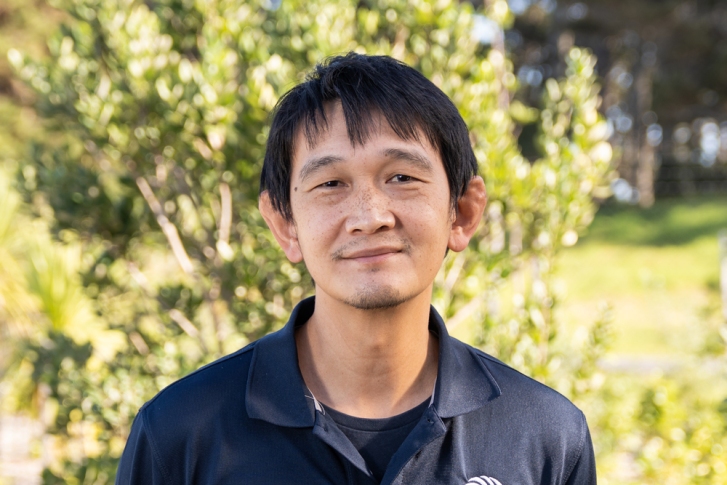About this service
Nutrition underpins the performance of fish stocks in terms of health, growth (production) and reproduction.
An optimal feed needs to maintain fish health, efficient rapid growth and produce high-quality gametes, all within the farm’s environmental growing conditions. At the same time, the feed must also be environmentally sustainable in terms of production (e.g., raw materials, production method) and downstream environmental impacts (e.g., due to excretion and waste). The feed is also the single biggest production cost in fed aquaculture operations. Improvements are constantly being made to optimise feed even for established aquaculture species. For many new and emerging aquaculture species, optimal nutritional requirements are completely unknown.
Our facilities at the Northland Marine Research Centre allows us the flexibility to conduct various nutritional and feed trials under replicated and environmentally controlled conditions, from the larvae stages through to broodstock. We are particularly focused on the growing importance of recirculating aquaculture systems (RAS) and sustainable feed in global aquaculture.
Our services
Our team can assist you in all the stages of research ranging from the design of experiments, running the trials, data collection, analyses and writing of reports. We routinely conduct replicated feed trials under environmental control/manipulation (e.g., temperature, CO2, O2, etc) for research and commercial clients. The range of facilities and expertise available allows for a wide range of bespoke trials to fit your need (e.g. modifying tanks to measure O2 consumption, faeces collection, RAS vs flow-through, etc.) for a diverse range of species (finfish, shellfish).
Our facilities
- Photothermally-controlled replicated trial tanks with the ability to manipulate water chemistry (e.g., salinity, O2, CO2, pH, etc). This system can be configured as a production feed trial unit containing forty-two, 1,500 L, round tanks divided across three rooms (18, 12 and 12 tanks respectively).
- Temperature-controlled larval and early juvenile trial system comprising of 12 x 1,500 L, 8 x 5,000 L and 6 x 10,000 L tanks.
- Photothermally-controlled RAS medium-scale trial tanks (6 x 5,000 L)
- Photothermally-controlled large scale tanks (6 x 25,000 L) configurable as RAS or flow-through.
- In-house commercial-scale live feeds (rotifer and artemia) and algae culture facilities.
- Near infra-red (NIR) instrument to measure proximate composition (moisture, lipid, protein, ash) of samples (e.g., fillet, feed, faeces).
- Metabolic chamber to measure respiration of animals under controlled environmental conditions (i.e. temperature, salinity, O2, CO2, pH, flows) and measure the quantity and quality of discharge using particle sizing, capture and analysis.
Our expertise
- Comparative feed trials (product testing) in controlled rearing environment. These can last from a few weeks to long term (e.g., years in broodstock feed trial).
- Energetics/metabolic physiology and growth related to diet. See also the Physiology section.
- Feeding regime and rearing environment optimisation for growth in larvae and growers.
- Broodstock diet/nutrition on reproductive performance.
Selected track record
Larvae nutrition
We have established effective larvae feeding strategies for yellowtail kingfish and hāpuku. We have determined commercially viable protocols and products for live feeds provision, nutritional enrichment and weaning protocol.
Juvenile nutrition and feeding
We have developed efficient feeding regimes, feed selection and environmental condition to achieve high growth in yellowtail kingfish and hāpuku. These are continually refined, particularly with regards to performance in RAS. We routinely conduct feed trials for commercial clients (e.g., feed producers, farmers).
Broodstock nutrition
We optimised a diet and feeding regime for hāpuku, contributing to dramatic improvements in the egg quality produced by the broodstock. We conducted feed supplement trials on kingfish broodstock that showed rapid incorporation of the additional nutrients in the ovary but did not affect reproductive performance. X-radiography feed intake and feed efficiency studies on king salmon have demonstrated that feed efficiency is heritable, independent of growth rate, and can be improved through selective breeding.



